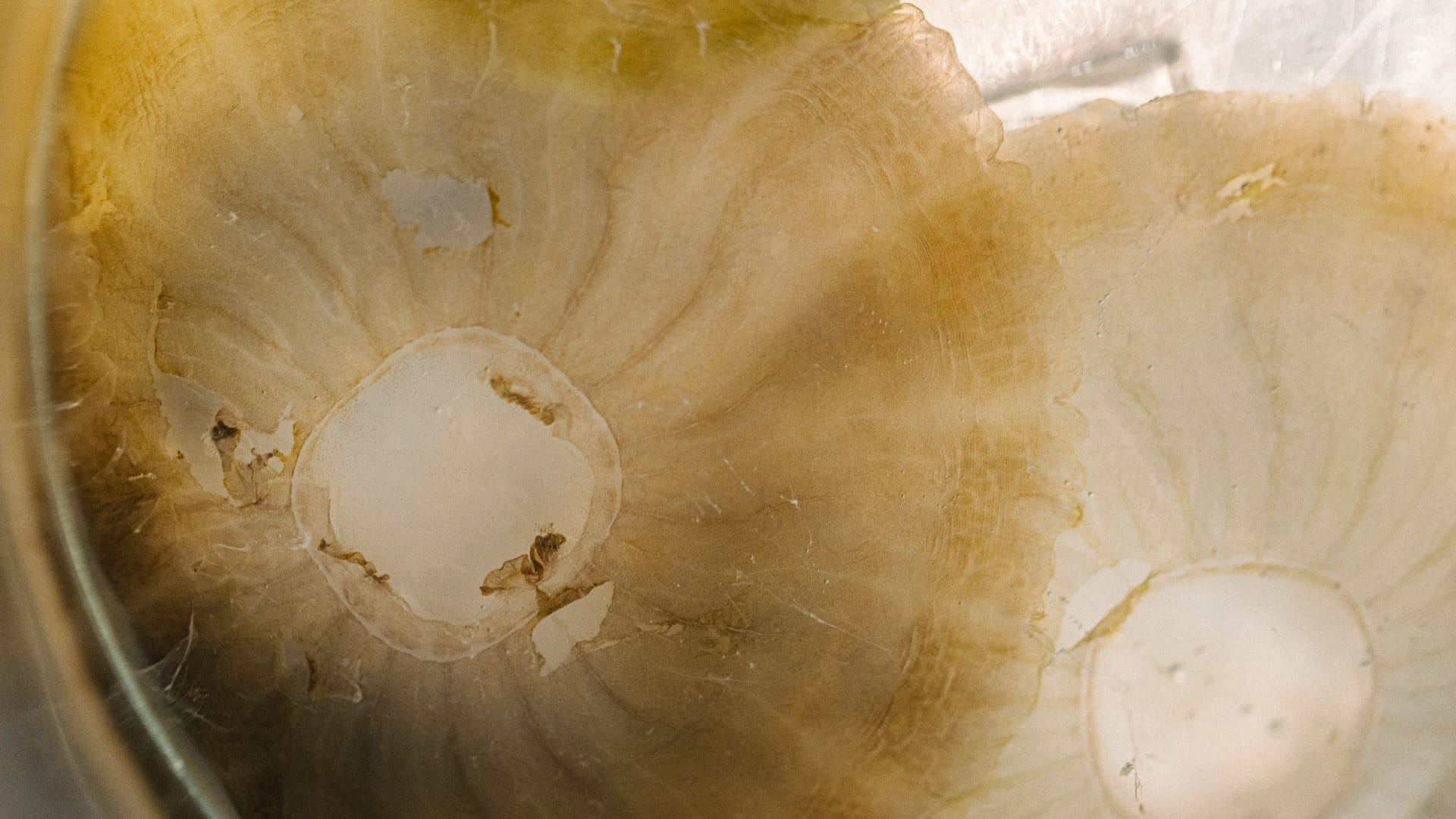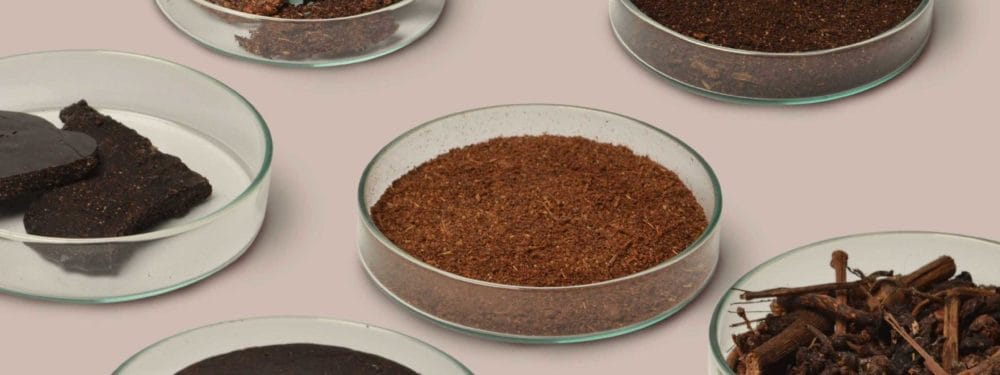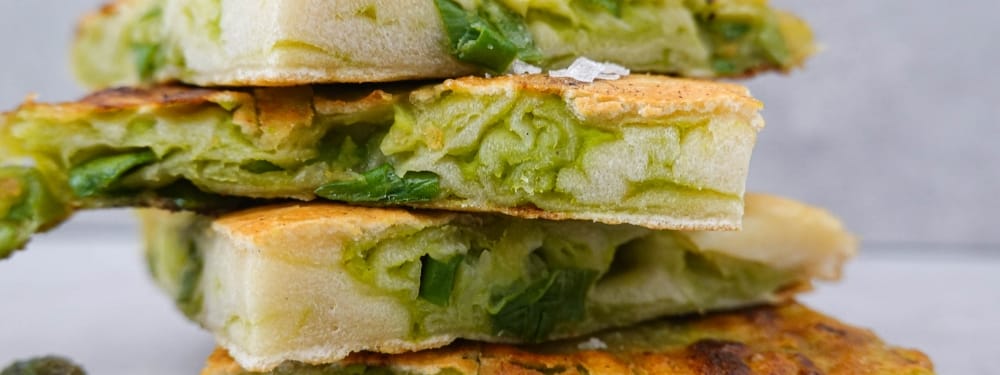Jellyfish for Future: Interview with Dr. Holger Kühnhold
An interview with Dr. Holger Kühnhold from the Leibniz Centre for Tropical Marine Research (ZMT) in Bremen. Holger Kühnhold breeds and researches mangrove jellyfish at the ZMT and sees great potential in them for feeding humanity in the future.

When it comes to the food of the future, our interest is piqued. We wanted to know more about what jellyfish are all about – read for yourself why we should eat jellyfish.
Jellyfish are heralding themselves as the “next big thing”. After soy, insects, algae or mushrooms, now jellyfish?
I would say it’s all in the mix. In view of a growing world population on the one hand and increasing scarcity of resources and environmental problems on the other, the global food supply is one of the key challenges of our time. In order to be able to provide enough healthy and affordable food in the future, the diversification of our food supply will become increasingly important. This involves both expanding the range of resources that we accept as food and new types of production systems. I am currently part of the Leibniz research consortium “Food4Future (F4F)-Food of the Future” in which we are researching and testing the cultivation of marine organisms (jellyfish, algae and halophytes) in novel, land-based/urban aquaculture systems, among other things. There is incredible potential in the production of food from saltwater organisms, as there is little or no competition with agricultural resources (such as fertile land and drinking water). However, up to now we have preferred to use large predatory fish (e.g. tuna and salmon) as food from the sea. However, this utilization strategy leads to massive overfishing in fisheries and the unsustainable use of fishmeal as fish feed in aquaculture. It would be much more efficient and sustainable if we were to feed ourselves more often from the marine resources at the bottom of the food chain. However, the majority of marine primary producers are not directly suitable as food for humans. We can only eat macroalgae, but not plankton. However, we can eat animals that only feed on natural plankton without supplementary feeding, such as sea cucumbers, mussels or jellyfish. They contain the most efficient animal proteins for human nutrition, as well as a wealth of health-promoting micronutrients.
To what extent do we even need alternative sources of animal protein? Isn’t it possible to be purely vegetarian?
Yes, of course, we need to consume less overall, not every steak needs to be replaced one-to-one with another protein. We don’t necessarily need animal protein at all, but a more varied diet is all the more important. Dairy proteins also play a role here, the production of which also does not correspond to sustainability ideals. Ultimately, it is about creating alternatives to provide ourselves with a varied supply of essential amino acids. Whether a vegetarian then accepts an admixture of jellyfish in the interests of sustainability is another discussion.
Are there reservations about jellyfish as food, similar to insects?
I’m not a social scientist, but the GoJelly project is also doing studies on how people react to jellyfish. My experience is that people would rather eat jellyfish than insects, as for many it is a rather indefinable mass. However, processed insects are still not consumed in large quantities and are still only available as a niche product, despite good sustainability values. In any case, we try to arouse curiosity and the desire to try it out. Consumers are also concerned about contamination in the sea, e.g. with plastic, when it comes to such new foods. However, this also applies to existing options. New things are often questioned more fundamentally.
Would large quantities be easily and sustainably available if it were a success?
We first investigate the land-based culture of different jellyfish species. The mangrove jellyfish has turned out to be the ideal candidate. These jellyfish live on the bottom and form a very close symbiosis with microalgae. This symbiosis enables the jellyfish to use sunlight to build up a biomass that is rich in animal proteins. In optimal light conditions and with some plankton as food, these jellyfish grow very quickly in our aquaculture systems. I see great potential for land-based breeding with this species. Natural mass occurrences of various jellyfish are of course also interesting, but such events cannot be reliably predicted. The stocks still need to be researched in much greater detail, including the effects of more intensive fishing.
What role does pleasure play?
We are concerned with the efficient production of biomass. If this is successful, we will see how food can be produced from it. This can be done as a powder, for example, but the taste and texture are less relevant. However, enjoyment is also a very exciting topic for us in order to get a feeling for the general acceptance of jellyfish as food among the population. I think eating jellyfish is associated with such absurdity in this country that the “scary-food” concept could work as an introduction. This would then be about enjoyment in the sense of a test of courage.
Packaging and storytelling play an important role here, an important aspect for us at MILK..
Yes, exactly, a video could be made, for example, showing what the diet of the future could look like with jellyfish. Many people still think of jellyfish as some kind of goo, but this is prejudice and does not correspond to how jellyfish could really appear on the table.
Sustainability aspects are also part of the story. How could trade help to ensure that the oceans are used more sustainably and efficiently?
We should make it clear what role we play in the food chain and appeal to consumers to take responsibility. This includes becoming aware of our function in the food chain. Because what we eat has an impact on the ecosystem. Quotas and seasons should therefore be given more consideration. Generally speaking, the further down the food chain we are, the more sustainable our diet is – in other words, it is better to eat small fish than large ones and, ideally, to eat lots of mussels, algae and even the occasional jellyfish. Incidentally, aquaculture is not a one-size-fits-all solution and is neither better nor worse. Here, too, it is important to take a close look, as this also has an impact on the ecosystem. The topic is complex and it is important to find out exactly how production takes place, e.g. which feedstuffs are used.
This would be an opportunity for retailers to market sustainability more actively, e.g. with quota fish sticks that always contain what should be eaten according to these considerations.
Exactly, but of course with jellyfish.
Thank you for the exciting conversation, we would be happy to think about packaging and selling jellyfish soon!

During the conversation, we also considered how the MILK. Food Lab could contribute to the culinary processing of jellyfish. This resulted in a cooperation for which we were allowed to process mangrove jellyfish from the ZMT for the first time. You can read more about it here.


